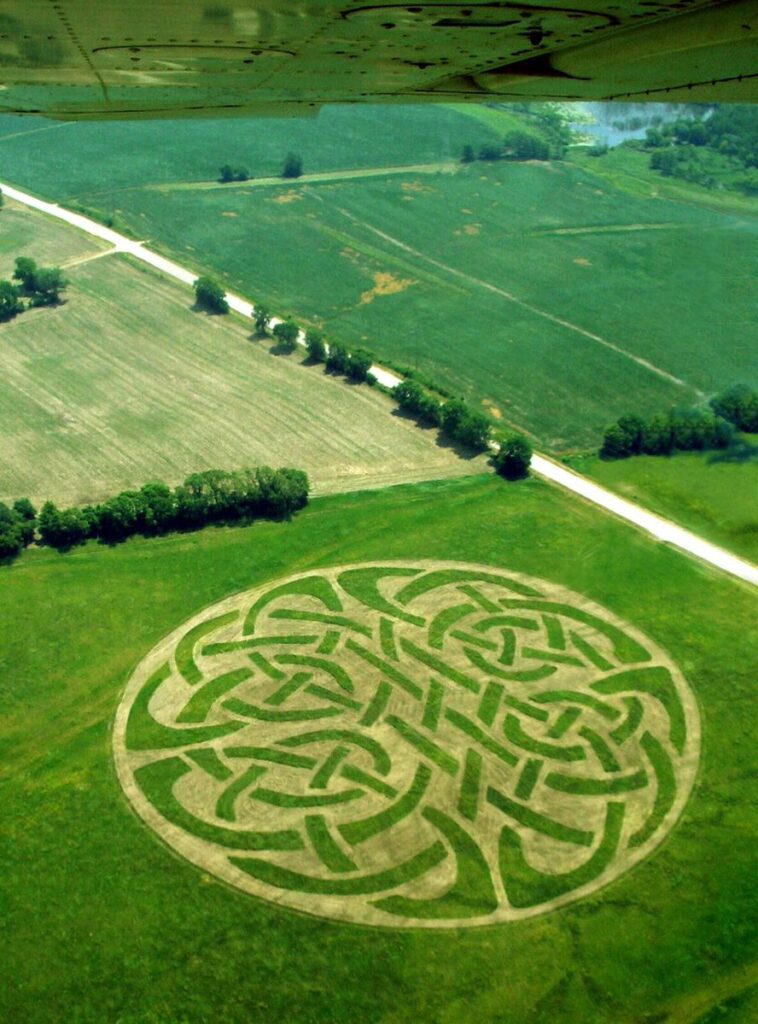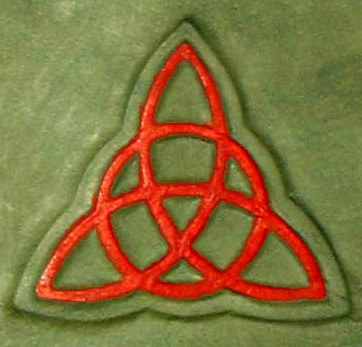Identity and art have always been deeply intertwined with one another. In no place is this more apparent than in the beautiful, twisting Celtic knot.
These knots, with their intricate looping patterns, are timeless symbols of Celtic heritage, religion, nature, and spirituality.
There isn’t just one type of Celtic knot, either. There are countless Celtic knot designs, all of them with different meanings.
Sadly, many of those meanings have been lost to time. This is why it’s so important for Celtic art historians to preserve the history of the knots we do understand.
In this article, we’ll delve into the fascinating history of Celtic knots, and their unique place in art as a whole.

What are Celtic Knots?
It’s hard to classify exactly what a Celtic knot is, seeing that they are present on everything from clothing to religious iconography.
What we do know is that a Celtic knot is a decorative design made up of intertwined loops and lines. They form a never-ending pattern with no defined beginning or end.
The endless nature of Celtic knots is what separates them from other types of knotted art, like those made by the ancient Romans and Greeks.
Celtic knots can be simple with as few as two or three loops, to mind-bogglingly intricate with dozens upon dozens of looping patterns.
Are Celtic Knots Irish or Scottish?
Both! Celtic knots can be found in both Irish and Scottish cultures.
This is because the term Celtic refers to the shared culture of all parts of the Celtic region, such as Ireland, Scotland, Wales, Cornwall, and Brittany. Celtic knots of different varieties can be found throughout these regions.
A History of Celtic Knots
The history of Celtic knotwork has two main periods–pre-Christianity and post-Christianity.
Pre-Christian Celtic Knots
As we mentioned before, knotwork art appeared throughout the world before it became dominant in the Celtic world. It was around the 3rd or 4th centuries that knotwork art started to gain popularity.
The types of knots that we consider Celtic knots arrived with the Romans during this same time frame. They could be found in spirals, step patterns, and key patterns during the pre-Christian period.
It was in 600 CE that this knotted artwork started to transform into the Celtic knots we are familiar with today. These Celtic knots were part of the art period from 600 to 900 CE known as Insular art.
Post-Christian Celtic Knots
By 800 CE, Celtic knotwork was beginning to make headway into Christian artwork. One of the most notable examples of early Celtic knots can be seen in the Book of Kells.
This book was a beautifully and intricately detailed illuminated religious manuscript, thought to have first been copied in 800 CE.

During this period, Celtic knots would find their way onto churches and other bits of architecture. Irish missionaries would spread the art style to other parts of the world as they traveled.
As the years passed, Celtic knot artwork grew more and more intricate and complicated.
In 900 CE, the Vikings’ invasions of England began. Celtic knotwork along with other sorts of Insular artwork started to disappear.
Celtic knots remained popular in Ireland until the 12th century before they began to fall out of favor there, too.
Celtic Knots Today
Today, Celtic knots might be more popular than ever. While they aren’t used to decorate newly built churches these days, Celtic knot artwork represents an important artistic connection to their culture for many Irish and Irish Americans.
Ancient structures that bear old Celtic knotwork are carefully preserved, and Celtic knot jewelry is popular with Irish tourists and locals alike.
Celtic knots are also commonly used for tattoos. They are the perfect design for someone who wants a more permanent connection to the ancient Celtic art style.
What Is the Most Famous Celtic Knot?
The most famous Celtic knot is the Trinity knot, also known as the triquetra.
The Trinity knot is made from three arching loops that are connected in the center. It is thought to represent the Holy Trinity.
Trinity knots can be interconnected to form long chains. They were used as borders and embellishments all over Ireland and other parts of the Celtic region.
Other popular Celtic knots include the Shield knot for protection, the Sailor’s knot to remember a loved one, and the Love knot, composed of two interlocking hearts.

What Does the 4-Loop Celtic Knot Mean?
A four-loop Celtic knot is known as a Dara knot, or eternity knot.
These modern-day Celtic knots are meant to represent strength and are based on the roots of an oak tree. A Dara knot is a popular motif in Celtic knot jewelry as well.
Another Celtic knot that appears to have four loops is Solomon’s knot. At first glance it may appear that the Solomon’s knot is composed of four arched loops. However, it is it actually two loops that interlock with one another.
Solomon’s knot is unique in that it isn’t only seen in Celtic culture. In Jewish culture, Solomon’s knot commonly appears in graveyards and catacombs as a symbol of eternity.
Solomon’s knot can also be found in African artwork, including glass beading and carvings, symbolizing royal status.

What Do Knots Symbolize?
The meaning behind knots, specifically Celtic knots, can vary from culture to culture, and even from knot to knot.
Overall, Celtic knots are never-ending. As such, they are perfect representations of eternity, infinity, and the interconnectedness of the world. Certain knots stand for love, and others for faith.
Some Celtic knots were even carved into the weapons of Celtic warriors as symbols of protection, strength, courage, and tenacity.
Celtic knots can have very personal meanings for some individuals, and even families. They link us back to our ancient ancestors, and offer a glimpse of what was considered beautiful by those that came before us.
References
“Celtic Knot – The History and Symbolism Behind Celtic Knots”-Armin Kific https://artincontext.org/celtic-knot/
“Celtic Knots: Discover the Meaning Behind These Intricate Designs”-Madeleine Muzdakis https://mymodernmet.com/celtic-knots/